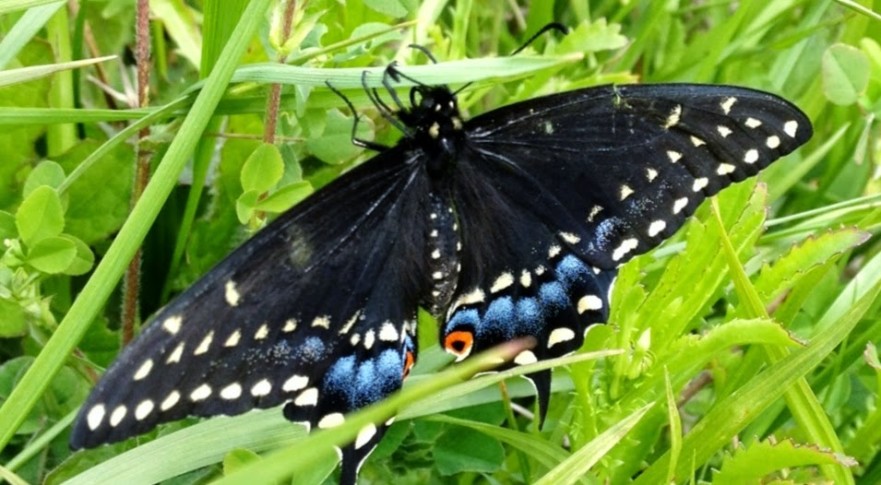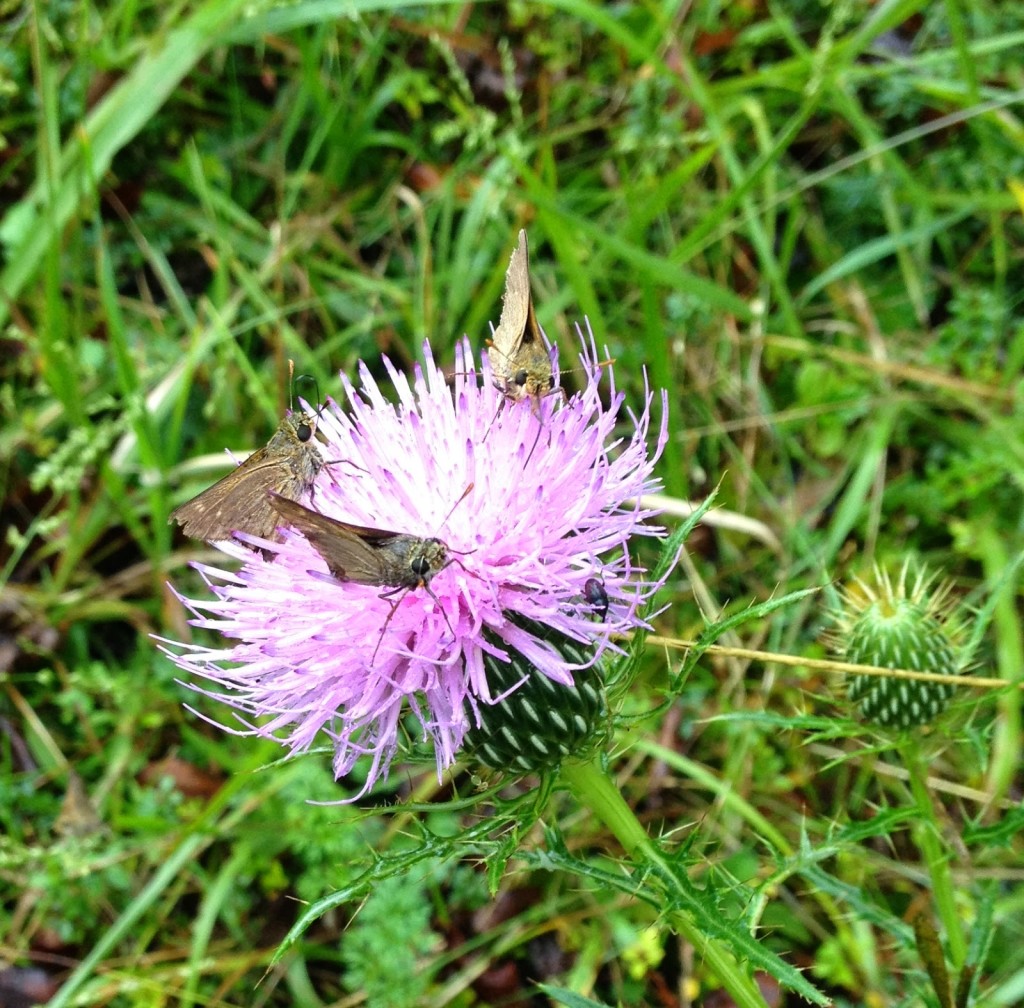 “Butterflies are self-propelled flowers.” (R.H. Heinlein)
“Butterflies are self-propelled flowers.” (R.H. Heinlein)
I’m taking a break from birthday stories tonight to think about butterfly season. As autumn begins to cool the air and paint the trees, the butterflies start appearing more and more in the hayfield where I often walk with my dog, Oscar. Sometimes I can get them to sit still long enough to take a picture there, but the butterflies tend to flit away just as I get focused in on them. I have better luck sneaking up on them in the garden where the zinnias are blooming profusely.
 “Beautiful and graceful, varied and enchanting, small but approachable, butterflies lead you to the sunny side of life. And everyone deserves a little sunshine.” (Jeffrey Glassberg)
“Beautiful and graceful, varied and enchanting, small but approachable, butterflies lead you to the sunny side of life. And everyone deserves a little sunshine.” (Jeffrey Glassberg)
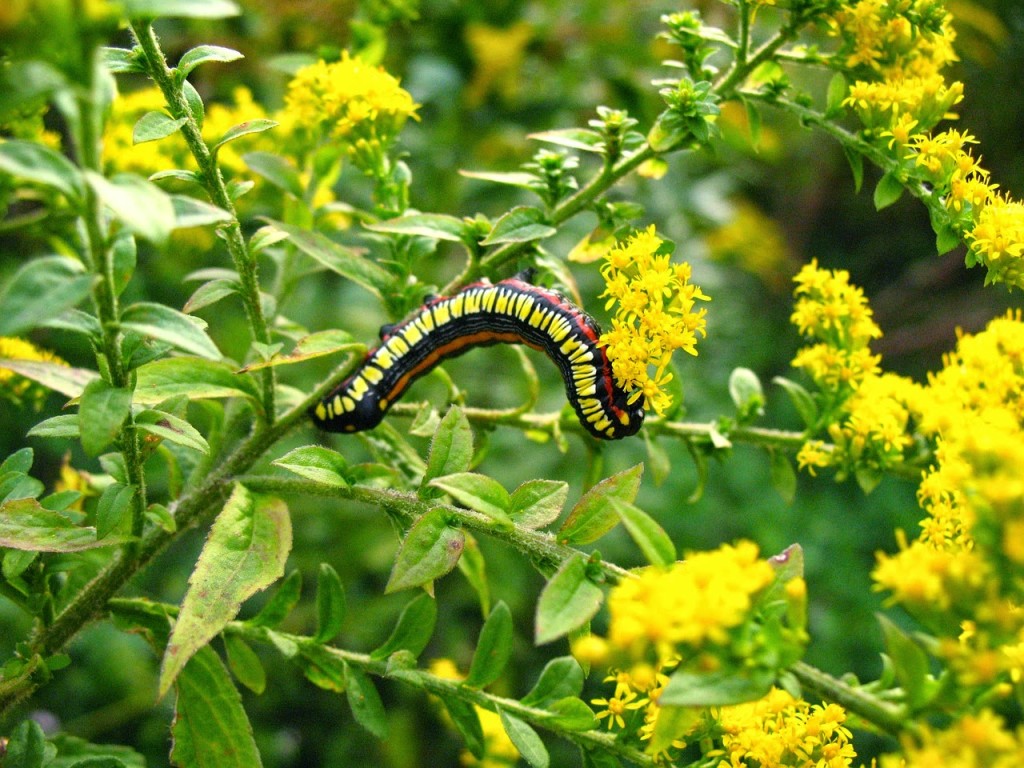 How does one become a butterfly? You must want to fly so much that you are willing to give up being a caterpillar. (Trina Paulus)
How does one become a butterfly? You must want to fly so much that you are willing to give up being a caterpillar. (Trina Paulus)
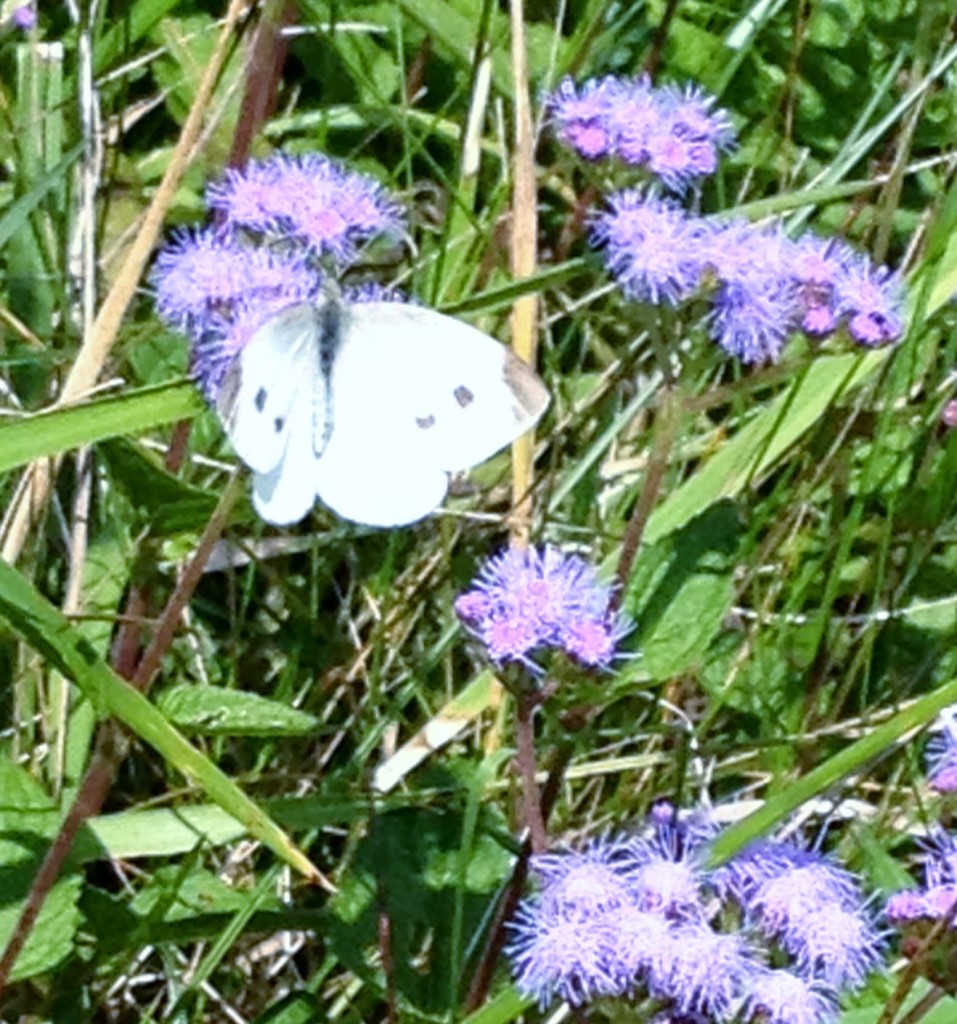 Here are some things you might not know about butterflies. First a group of butterflies is called a Kaleidoscope or a Flutter. I like both of those names although the butterflies in my field are often loners. The little white and yellow ones do sometimes gather in a Flutter. That name fits them best. The Kaleidoscope might fit the Monarchs all in a bunch in their winter quarters. I’ve seen a few Monarchs this year, but none that will pose for me. They stay on the move.
Here are some things you might not know about butterflies. First a group of butterflies is called a Kaleidoscope or a Flutter. I like both of those names although the butterflies in my field are often loners. The little white and yellow ones do sometimes gather in a Flutter. That name fits them best. The Kaleidoscope might fit the Monarchs all in a bunch in their winter quarters. I’ve seen a few Monarchs this year, but none that will pose for me. They stay on the move.
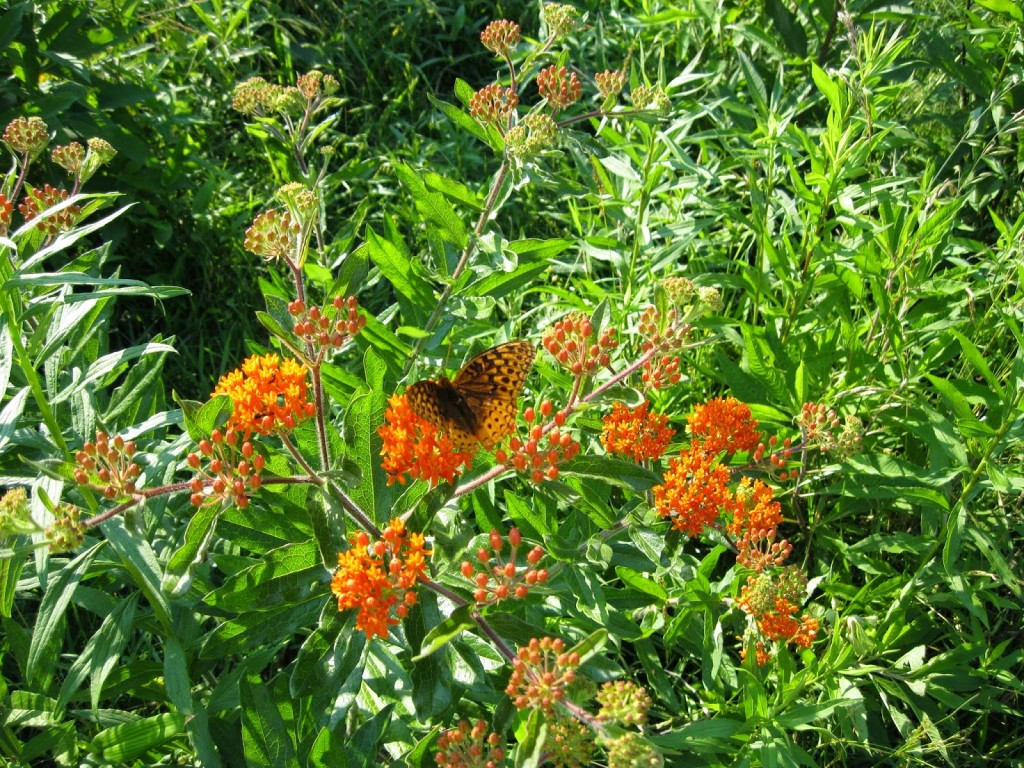
Some butterflies are very tiny, only 1/8 inch. Others can have a wing span of 12 inches. They see red, green and yellow so those flowers attract them. However they do like those orange milkweeds. Many butterflies can taste with their feet to find out if the leaf they are on will be good caterpillar food and thus a good place to lay their eggs.
There are 24,000 species of butterflies. I’ve only seen a small percentage of them. Moths are even more numerous with around 140,000 species discovered all over the world. If I leave the porch light on at night, it looks like at least half of them gather at my door to sneak inside, but actually it’s probably not over a hundred or so. 🙂 Talk about a flutter. Some moths are beautiful. Some are plain grays. Moths can race along at twenty-five miles an hour while butterflies top speed is twelve miles per hour.
Two more interesting insect facts to end with here. First, there are more types of insects in
one tropical rain forest tree than there are in the entire state of Vermont. Then, in 1958,
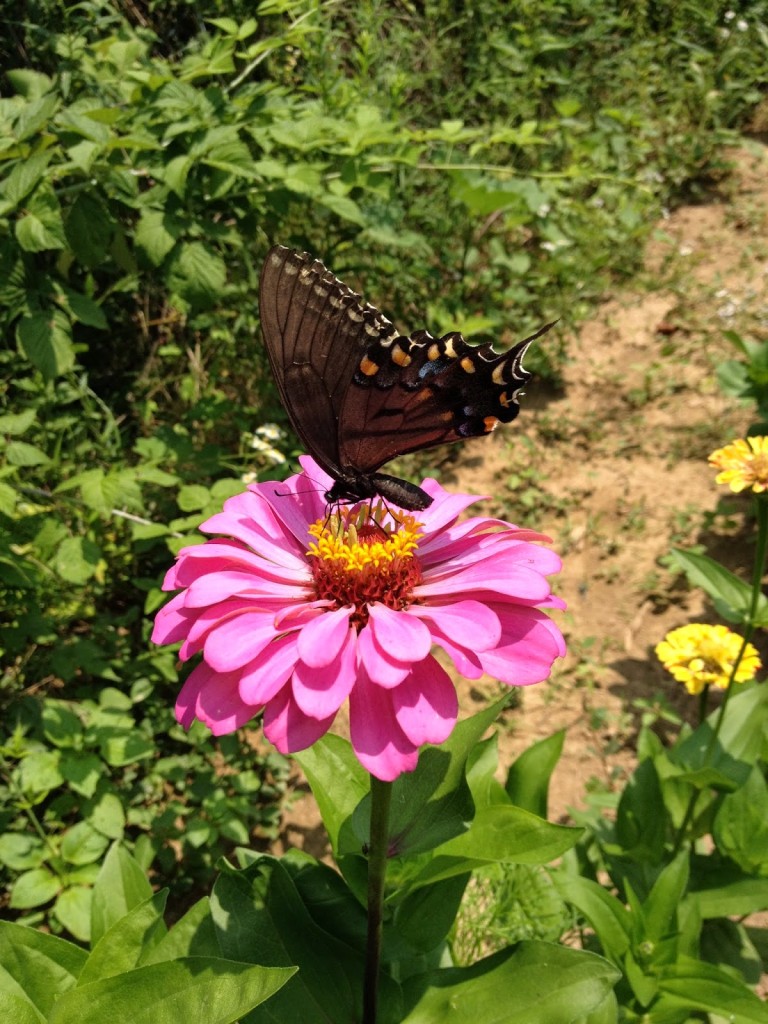 entomologist W.G. Bruce published a list of Arthropod references in the Bible.
entomologist W.G. Bruce published a list of Arthropod references in the Bible.
The most frequently named bugs from the Bible are: Locust: 24, Moth: 11,
Grasshopper: 10, Scorpion: 10, Caterpillar: 9, and Bee: 4. I would have thought there would be more than that. What do you think? (Some of the butterfly facts listed and more can be found here.)
Just when the caterpillar thought the world was over, it turned into a butterfly. (Proverb)
You do still have until the end of September to get your name in my birthday celebration giveaway. Check out the prizes on my website event page. You can enter by leaving a comment here with a way to contact you or by sending me an e-mail at annhgabhart(at)yahoo(dot)com.
to a huge almost 12 inches.
Woolybear caterpillar are wide, a cold winter is
coming.
hour. Some moths can fly 25 miles per hour!

to the Gulf of Mexico, a distance of about 2,000
miles, and return to the north again in the
spring.
is less than 86 degrees.
Egyptian frescoes at Thebes, which are 3,500 years
old.

Lepidoptera have been found.
The moths are even more numerous: about 140,000
species of them were counted all over the world.
the longest lifetime of the adult butterflies:
9-10 months.
– See more at: http://www.thebutterflysite.com/facts.shtml#sthash.vgVN8dSj.dpuf
to a huge almost 12 inches.
Woolybear caterpillar are wide, a cold winter is
coming.
hour. Some moths can fly 25 miles per hour!

to the Gulf of Mexico, a distance of about 2,000
miles, and return to the north again in the
spring.
is less than 86 degrees.
Egyptian frescoes at Thebes, which are 3,500 years
old.

Lepidoptera have been found.
The moths are even more numerous: about 140,000
species of them were counted all over the world.
the longest lifetime of the adult butterflies:
9-10 months.
– See more at: http://www.thebutterflysite.com/facts.shtml#sthash.vgVN8dSj.dpuf

